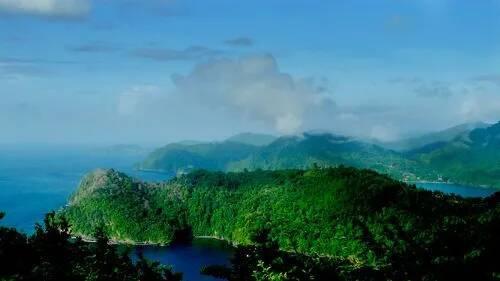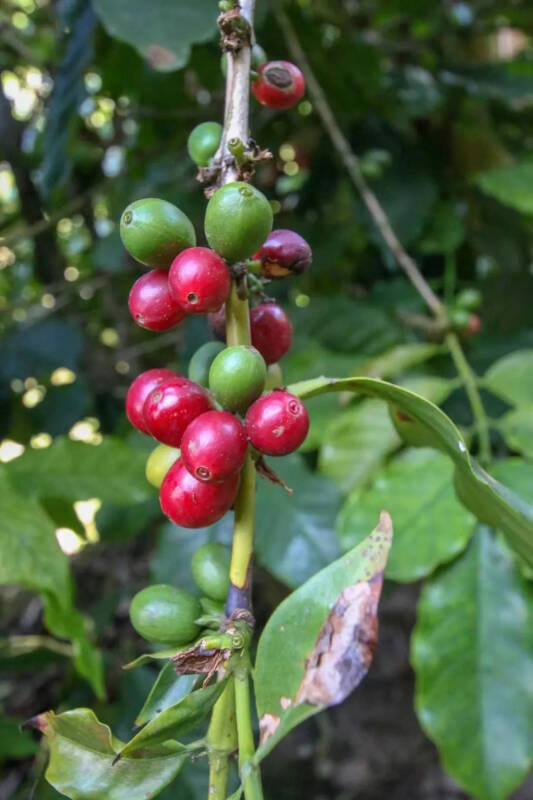Introduction to coffee development history, coffee growing areas and Blue Mountain Coffee in Jamaica
Jamaica is one of the Caribbean island countries, facing Haiti across the Jamaica Strait to the east, and is the third largest island in the Caribbean. The coastal areas of Jamaica are plains, mountains in the east, hills and limestone plateaus in the middle and west. Belongs to the tropical rain forest climate. The rainy season is from May to June, September to November, and the dry season is from December to March of the following year. The north-central region is rich in rainfall, the temperature is generally between 22 and 32 degrees, and the annual average temperature is 27 degrees.

In 1728, the Governor Sir Nicholas Lawes received a gift from the Governor of Martinique (now France). It was a coffee sapling, so the history of coffee on the island began. Sir Lawes has experimented with a variety of crops before, and then planted seeds in St Andrews. But initial production was quite limited, and by 1752, Jamaica had exported 27 tons of coffee.
In the late 18th century, coffee-growing areas also spread from St. Andrew to the Blue Mountains. In 1800, there were 686 coffee plantations on the island. However, slavery was abolished in 1807 and was really implemented in 1838, resulting in a shortage of manpower. Coupled with mismanagement and the loss of British preferential terms of trade to the colonies, the coffee industry began to decline, leaving only 180 coffee plantations in the 19th century. However, the coffee grown at that time was of poor quality, and the government passed a decree in 1891 hoping to improve the quality by teaching producers knowledge about coffee cultivation, as well as improving the infrastructure so that coffee could be centrally processed and graded. The Central Coffee Clearing House (Central Coffee Clearing House) was also established in 1944, and all coffee must be approved by it before it can be exported. In addition, the Jamaica Coffee Industry Council (The Jamaica Coffee Industry Board, referred to as CIB) was established in 1950, but the organization merged with other Jamaican commodity agencies in 2018 to form JACRA (Jamaica Agricultural Commodities Authority), and every barrel of Blue Mountain coffee beans must now be subject to quality control through JACRA. When it was founded, it also promulgated the "Coffee Industry Supervision Law", delineating the world-famous "Blue Mountain Coffee growing area".

According to the Coffee Industry Regulation Law, the Blue Mountain planting area is distributed in four areas: St.Andrew, St.Thomas, Portland and St.Mary. Only the coffee varieties grown in this area with an altitude of 915m-1700 m can be named Jamaican Blue Mountain Coffee (Jamaica Blue Mountain).
The Blue Mountain range is located in eastern Jamaica, at an altitude of 1000-1700 meters. It is surrounded by the Caribbean Sea. When the weather is clear, the sun shines directly on the sea, and the peak reflects the blue mountain light of the sea, hence its name. The coffee growing belt of the Blue Mountains has fertile volcanic soil, fresh air and humid climate, foggy and rainy all the year round, which has created the world-famous Jamaican Blue Mountain Coffee. And the area is also planted with Blue Mountain iron trucks, which have evolved to have better disease resistance than ordinary iron trucks after more than 200 years.
Blue Mountain Coffee is the only coffee exported in wooden barrels, shaped like a small wine barrel with 70kg raw beans left in each barrel. Only Jamaica Blue Mountains (No. 1, No. 2 and No. 3, PB) and Jamaica Alpine (Alpine Top, Alpine PB) can be used. There are three specifications: 70kg, 30kg, 15kg, and the rest can only be packed in gunny bags.
Blue Mountain Coffee is smooth and fragrant, and its excellent balance is a major feature. at present, the Blue Mountain Coffee from Qianjie is from Clifton Manor. The use of washing treatment, the taste acidity, mellow and aroma are well balanced, the palate is delicate and silky, with a slight soft acidity and a hint of cocoa aftertaste.
Important Notice :
前街咖啡 FrontStreet Coffee has moved to new addredd:
FrontStreet Coffee Address: 315,Donghua East Road,GuangZhou
Tel:020 38364473
- Prev

Lucky cat and mouse joint return, net friend: delete it!
▲ Click to follow| Daily Boutique Coffee Culture Magazine Coffee Workshop Less than ten days before Christmas, various brands began to make full efforts to promote their products. In addition to launching new Christmas products, some brands are also preparing to return their previous Christmas limited drinks, such as Ruixing's Christmas Sweetheart Thick Milk Latte.
- Next

SCA cooperates with the Panamanian government to expand world trade in coffee to Central America
Recently, at the inauguration ceremony held at the Panama Convention Center in Panama City, the Chief Executive Officer and Chairman of the Board of Directors of the Special Coffee Association (SCA) announced a partnership with the Panamanian Coffee Association (SCAP) and the President of the Panamanian Chamber of Commerce, Industry and Agriculture. To promote the 2026 Coffee World Trade Show
Related
- Why does hot American coffee taste bitter? Difference in proportional concentration between hot American and ice American
- Is espresso stored overnight in the refrigerator harmful to your body? Is frozen coffee better than freshly ground coffee?
- What parameters and proportions of water temperature should be used to grind and brew fresh coffee beans? Why can't I drink freshly roasted coffee right away?
- Customers have "changed" Manner's new products! Shop assistant: Please don't mess around!
- Remove sockets in customer areas at Starbucks stores?! Netizen: I won't go if I really tear it down
- What is the difference between the taste steps of sun-dried coffee and washed coffee? Why is sun-cured coffee sweeter and washed coffee sour?
- The recipe for salty grapefruit dirty is revealed! Coffee Festival salty grapefruit dirty coffee making materials parameters ratio milk share!
- How about the flavor of Sunlight 74158 at Sidamo Banshaha Mathieu Processing Factory in Ethiopia? 74158 Share the proportion of coffee brewing parameters!
- What effect does Italian American coffee with filter paper have? Will coffee taste better if it is put on filter paper at the bottom of the powder bowl?
- What is the color difference in coffee beans? What are the characteristics of honey processed coffee beans? Why are the anaerobically treated coffee beans uneven in color?

